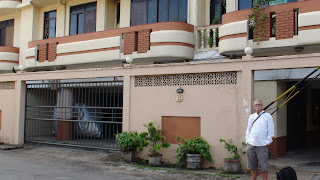I can’t sleep
 |
| Debris of war that goes on and on |
 |
| bombed houses in ithe vanni region |
 |
| lagoon |
 |
| Sea of bikes that go on and on |
In the book, the Cage, by Gordon Weiss, the author paradoxically begins the book at the end of the story of the Sri Lankan war; the killing of Prabhakaran, the LTTE leader. It is here, on the Nandikadal Lagoon, in the northeast of Sri Lanka where my mind is wrestling with these words and images.
On the weekend, we made arrangements with a young Sinhala man who took us into the Vanni region, as it is known. The Vanni is basically a triangular region between Jaffna, Mullaitivu and Kilinochchi and the region most severely affected by the final days of the war. Inside the Vanni is Pathukuddiyiruppu, the site of Prabhakaran's personal bunker hide-out and the Nandikadal Lagoon, where the final days of the war played out.
I read the book the Cage sometime ago and am re-reading it since that visit. He describes an "abandoned tent city that sprawled across the narrow pockmarked spit, a wasteland of torn plastic sheeting, bodies and burned out vehicles. Since February (2009) the tents had sheltered around 330,000 men, women and children besieged by the SLA, which pounded the area with heavy weapons in an effort to crush the Tamil Tiger guerillas operating within the siege zone... tens of thousands of civilians struggled across the shallow lagoon....carrying their weak, wounded, elderly and young." Reading this the first time didn't affect me like it has now, after visiting the region.
It is the images of these people who had been constantly on the move, displaced and now trapped in the "cage" that is disturbing me. Until I had seen the evidence of this migration and the barren landscape of the scene, did I fully understand the horror of war. Oh yes, the tents and bodies are all gone now, but much of the evidence remains. Boats, shells, vehicles, bombed buildings and... the bikes.
I think it was the bikes that made the migration of the people evident and the number of bikes that depicted the mass of displacement, death and the waste of war: waste of equipment, waste of the environment, waste of people.



Comments
Post a Comment